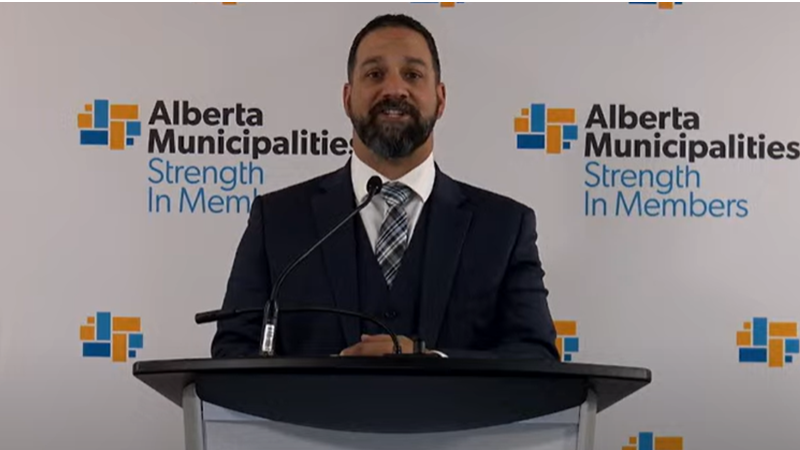
Fractious environment the current state of things for municipally-elected officials, says AB Munis president
The 2024 Alberta Municipalities (AB Munis) conference in Red Deer ended Friday with the organization’s president saying there’s a level of fractiousness, but maintaining that communities are not “at odds” with the provincial government.
Tyler Gandam, also mayor of Wetaskiwin, told rdnewsNOW earlier this month he didn’t think “at odds” was an accurate description of the current relationship that exists with the province.
“A quick scan of the 27 resolutions we debated and voted on confirms that municipalities are dealing with a lot of inter-related issues,” Gandam began Friday during a media conference. “The resolutions reflect the complexity and challenging nature of municipal governance in 2024, made even more complex by the fractious political environment.”
After an initial question asking if he still thinks municipalities and the province aren’t at odds, which he maintained, and after seeing three days of discussion and hearing what the premier had to say about certain issues, Gandam was asked to elaborate on his use of ‘fractious.’


